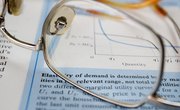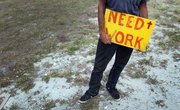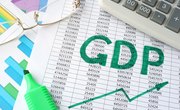Supply-side economics is one side of a debate in macroeconomics over which policies create the most growth. Proponents of supply-side economics believe that governments should remove barriers to production by lowering taxes and decreasing regulation. It is also referred to as Reaganomics because it was espoused by President Ronald Reagan or as trickle-down economics because opponents claim that it primarily benefits the wealthy.
Deficits
One of the early claims made by supporters of supply-side economics was that a higher tax rate does not necessarily lead to higher tax revenues. They believed that lowering the tax rate could actually increase the amount of money brought in by taxes, because the lower taxes would create economic growth. The government would take a smaller piece of the pie, but the whole pie would be bigger. In practice, the supply-side policies of the Reagan administration resulted in a decrease in government revenue. A decrease in tax revenue leads either to deficits or to the reduction of government services.
Income Inequality
Opponents argue that supply-side economics increases the disparity between the rich and the poor. Supply-side economics generally supports lowering income taxes and capital-gains taxes. The primary beneficiaries of such a change are those with the highest incomes. Even if the policy results in some reduction in unemployment or benefits for the majority of people, the upper class receives even greater benefits.
Flaws in the Trickle-Down Theory
The idea of supply-side economics is that wealthy people will take the opportunity given by lower tax rates to buy more things, make more investments and start more businesses, thus growing the overall economy. Even if this were true, the economic growth is not uniformly equal. If more people buy yachts, for example, a few middle-class factory workers or yacht-club waiters may benefit, but a large portion of that money stays at the top, with the executives and shareholders of the yacht company.
Deregulation
Aside from lowering taxes, another tenet of supply-side economics is reduced regulation to create growth. It is often true that lower regulation means higher profits and higher gross domestic product, but there are hidden costs of deregulation. If the government reduces emissions regulations on coal power plants, then the coal plants will make more money and electricity will be cheaper for everyone. But those benefits do not take into account the medical costs of the people who get asthma or lung cancer from the increased coal burning, as well as all the productivity they lose while sick. Therefore, while it appears deregulation makes the economy grow, it could actually reduce the overall population's health and standard of living.
Related Articles
References
- Brookings: Bush's Tax-Cut Plan Slashes Growth
- "The Return of Depression Economics and the Crisis of 2008"; Paul Krugman; 2009
Writer Bio
Eric Moll began writing professionally in 2006. He wrote an opinion column for the "Arizona Daily Wildcat" and worked as an editor for "Persona Literary Magazine." He has a Bachelor of Science in environmental science and creative writing from the University of Arizona.











